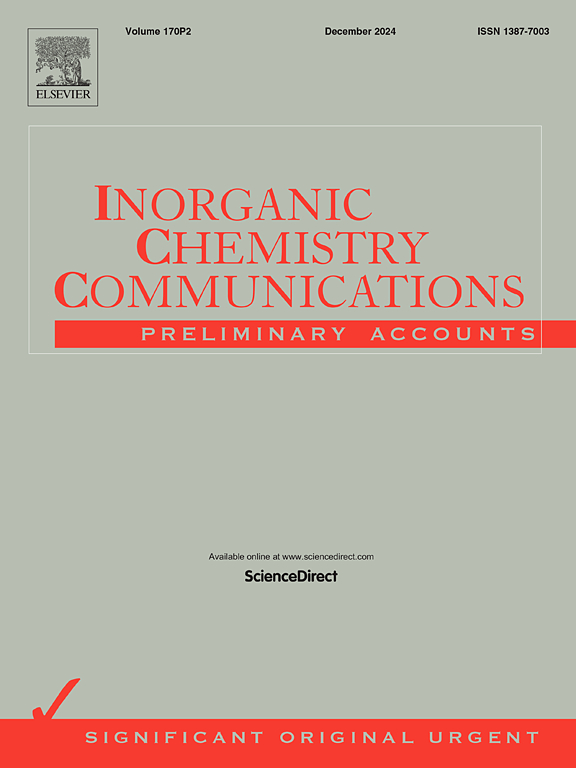A simple, quick, and field-portable colorimetric assay for detecting Pefloxacin mesylate in biological and food samples
IF 4.4
3区 化学
Q1 CHEMISTRY, INORGANIC & NUCLEAR
引用次数: 0
Abstract
The simple colorimetric assay for detection of Pefloxacin mesylate in biological and food samples was developed using 4-hydroxycoumarin triazole thiazole stabilized silver nanoparticles (HCTT-AgNPs). HCTT-AgNPs were synthesized via chemical reduction method using sodium borohydride (NaBH4) and characterized using different spectroscopic techniques such as UV–visible spectroscopy, atomic force microscopy (AFM), scanning electron microscopy (SEM), dynamic light scattering (DLS), and powder X-ray diffraction (XRD). HCTT-AgNPs were found to be highly stable under different physiological parameters such as pH, electrolyte, and elevated temperature stability. The addition of Pefloxacin to HCTT-AgNPs produced a significant reduction in the absorption intensity along with naked eye detectable color change, while all other tested analytes did not produce any detectable change. The developed nano sensor is highly selective for the recognition of Pefloxacin in the presence of other similar analytes as no interference was recorded in competitive experiments. The detection limit for Pefloxacin was 0.002 µM (2 nM) with linearity (R2) of 0.9952 and a stoichiometric binding ratio of 1:2, between HCTT-AgNPs + Pefloxacin antibiotics drug. Further the nano probe was successfully employed for the detection of Pefloxacin in environmental (tap water), biological (plasma, serum, urine, etc.), and food samples.
一种检测生物和食品样品中甲磺酸佩氟沙星的简单、快速、现场便携式比色法
采用4-羟基香豆素三唑噻唑稳定银纳米粒子(HCTT-AgNPs)建立了生物和食品样品中甲磺酸佩氟沙星的简单比色测定方法。以硼氢化钠(NaBH4)为原料,采用化学还原法合成了HCTT-AgNPs,并利用紫外可见光谱、原子力显微镜(AFM)、扫描电镜(SEM)、动态光散射(DLS)和粉末x射线衍射(XRD)等不同的光谱技术对其进行了表征。HCTT-AgNPs在不同的生理参数(如pH、电解质和高温稳定性)下都具有很高的稳定性。在HCTT-AgNPs中加入培氟沙星可显著降低吸收强度,并伴有肉眼可检测到的颜色变化,而所有其他测试分析物均未产生任何可检测到的变化。所开发的纳米传感器在其他类似分析物存在的情况下对培氟沙星的识别具有高度选择性,因为在竞争性实验中没有记录干扰。HCTT-AgNPs +培氟沙星抗生素的检出限为0.002µM (2 nM),线性(R2)为0.9952,化学计量结合比为1:2。此外,该纳米探针还成功应用于环境(自来水)、生物(血浆、血清、尿液等)和食品样品中培氟沙星的检测。
本文章由计算机程序翻译,如有差异,请以英文原文为准。
求助全文
约1分钟内获得全文
求助全文
来源期刊

Inorganic Chemistry Communications
化学-无机化学与核化学
CiteScore
5.50
自引率
7.90%
发文量
1013
审稿时长
53 days
期刊介绍:
Launched in January 1998, Inorganic Chemistry Communications is an international journal dedicated to the rapid publication of short communications in the major areas of inorganic, organometallic and supramolecular chemistry. Topics include synthetic and reaction chemistry, kinetics and mechanisms of reactions, bioinorganic chemistry, photochemistry and the use of metal and organometallic compounds in stoichiometric and catalytic synthesis or organic compounds.
 求助内容:
求助内容: 应助结果提醒方式:
应助结果提醒方式:


